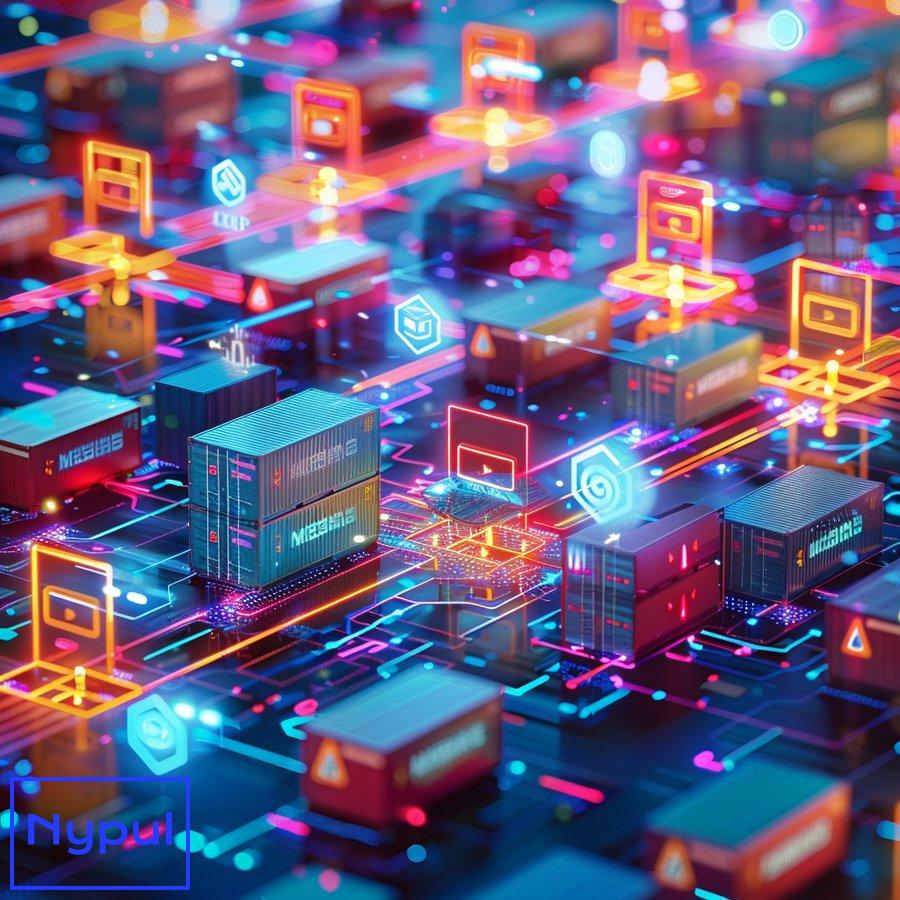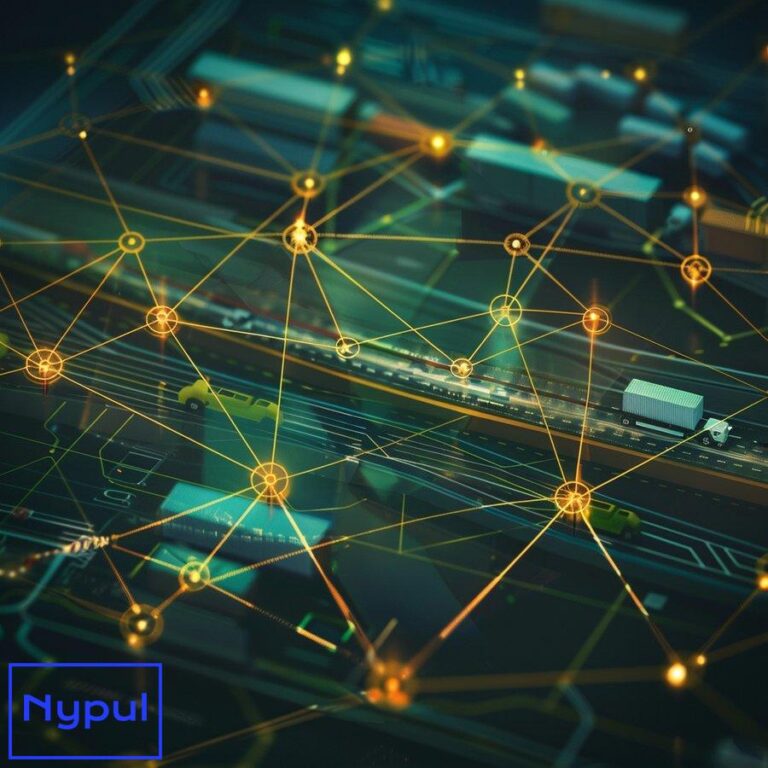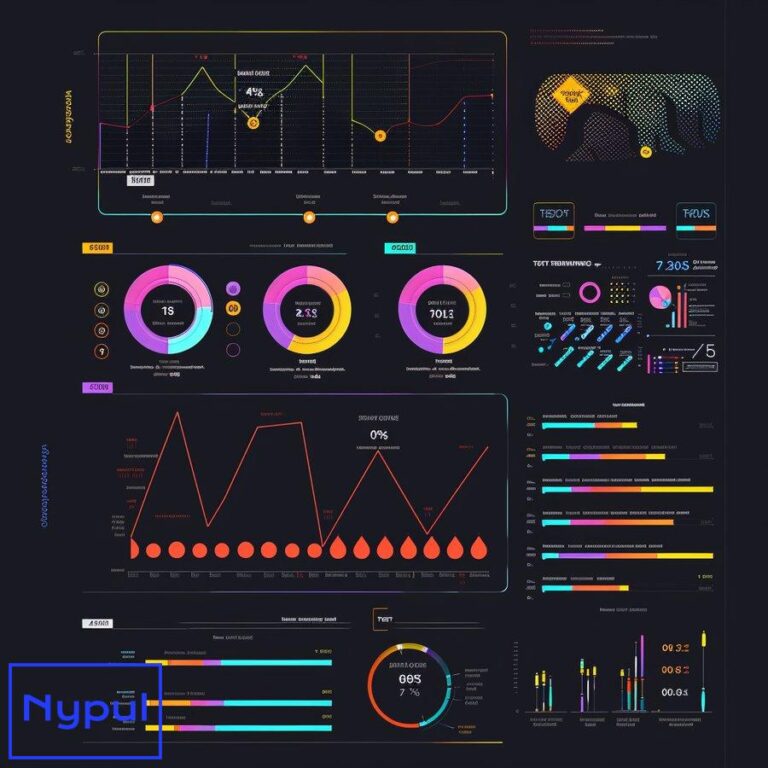What Are the Challenges of Containerization
What is containerization?
Containerization is a virtualization technique that packages an application with its entire runtime environment—all the dependencies, libraries, configuration files, and other necessary components—into a standardized unit called a container. These containers are isolated from each other and from the host operating system, ensuring consistent and reliable application deployment across different computing environments, from development to production.

Containerization simplifies the process of building, deploying, and running applications by providing a consistent, portable, and scalable solution. It addresses the “works on my machine” problem by ensuring that an application runs identically on any machine, regardless of the underlying infrastructure or configuration.
By encapsulating an application and its dependencies within a container, containerization eliminates the need for manual installation and configuration on each target environment. This streamlines the deployment process and reduces the risk of inconsistencies or incompatibilities that can arise when moving an application from one environment to another.
Containerization also enables efficient resource utilization by sharing the host operating system’s kernel among multiple containers. This results in a more lightweight and efficient virtualization solution compared to traditional virtual machines (VMs), which require a separate operating system for each instance.
The rise of containerization has been driven by the growing popularity of platforms like Docker and Kubernetes, which have made it easier to build, deploy, and manage containerized applications at scale. These technologies have revolutionized the way developers and operations teams approach application deployment, enabling faster delivery, improved scalability, and better resource utilization.
How does containerization impact security and data protection?
Containerization can have both positive and negative implications for security and data protection. On the one hand, it can enhance security by providing a layer of isolation between applications and the underlying host system. Each container runs in its own isolated environment, limiting the potential impact of security vulnerabilities or malicious activities within one container from affecting other containers or the host system.

However, containerization also introduces new security challenges that need to be addressed. One of the main concerns is the potential for container breakout attacks, where a malicious actor exploits vulnerabilities in the container runtime or the host system to gain unauthorized access or escape the container’s isolation. This can lead to the compromise of the entire host system and potentially other containers running on the same host.
To mitigate these risks, it is crucial to implement robust security measures, such as:
- Keeping container images up-to-date and patching vulnerabilities promptly
- Implementing strict access controls and authentication mechanisms
- Enabling security features provided by container platforms, such as SELinux or AppArmor
- Regularly scanning containers for known vulnerabilities and misconfigurations
- Implementing network segmentation and firewalling to control communication between containers and external systems
Another security consideration is the handling of sensitive data within containers. Containers can be used to package and distribute applications that process or store sensitive data, such as customer information, financial records, or intellectual property. It is essential to ensure that appropriate data protection measures are in place, such as:
- Encrypting sensitive data at rest and in transit
- Implementing access controls and role-based permissions for data access
- Regularly backing up and securely storing container data
- Complying with relevant data protection regulations and standards
Containerization can also impact data persistence and durability. Containers are designed to be ephemeral and stateless, meaning that any data stored within a container is lost when the container is stopped or deleted. To ensure data persistence, it is necessary to use external storage solutions, such as volumes or persistent storage services, and properly manage the lifecycle of container data.
What are the technical challenges of implementing containerization?
While containerization offers many benefits, there are several technical challenges that organizations need to address when implementing containerized environments. Some of the key challenges include:
Container orchestration and management
As the number of containers grows, managing and orchestrating them becomes increasingly complex. Organizations need to adopt container orchestration platforms like Kubernetes or Docker Swarm to automate the deployment, scaling, and management of containers across multiple hosts. These platforms introduce their own set of complexities, such as cluster management, service discovery, load balancing, and scaling.
Image management and security
Container images serve as the foundation for creating containers. Managing and securing these images is crucial to ensure the integrity and consistency of the containerized environment. Challenges include:
- Maintaining a secure and reliable container registry
- Regularly scanning images for vulnerabilities and malware
- Enforcing policies for image versioning, tagging, and access control
- Ensuring that base images are up-to-date and secure
Networking and service discovery
Containerized applications often need to communicate with each other and with external systems. Setting up and managing network connectivity in a containerized environment can be complex, especially when dealing with issues like service discovery, load balancing, and network policies. Container platforms provide networking solutions, but they may require additional configuration and integration with existing network infrastructure.
Storage and data management
As mentioned earlier, containers are designed to be stateless, but many applications require persistent storage for data. Integrating external storage solutions, such as volumes or cloud storage services, with containerized applications can be challenging. Issues like data portability, backup, and disaster recovery need to be addressed.
Monitoring and logging
Monitoring and logging are essential for troubleshooting issues, analyzing performance, and ensuring the overall health of a containerized environment. However, the distributed nature of containerized applications and the ephemeral nature of containers can make monitoring and logging more complex. Container platforms provide logging and monitoring solutions, but they may require additional configuration and integration with existing monitoring tools.
Performance and resource management
Containerization aims to optimize resource utilization, but it can also introduce performance challenges. Factors like resource constraints, resource contention, and the overhead of container runtimes can impact application performance. Organizations need to carefully manage resource allocation, set appropriate resource limits, and monitor resource utilization to ensure optimal performance.
Testing and debugging
Testing and debugging containerized applications can be more complex than traditional applications due to the distributed nature of the environment and the potential for differences between development, testing, and production environments. Organizations need to implement robust testing strategies, including unit testing, integration testing, and end-to-end testing, to ensure the reliability and correctness of containerized applications.
To address these challenges, organizations need to invest in training, tooling, and processes that support the adoption and management of containerized environments. This includes developing skills in container orchestration, image management, networking, and monitoring, as well as establishing best practices and guidelines for containerized application development and deployment.
How does containerization affect networking and communication?

Containerization introduces new challenges and considerations for networking and communication between containers, services, and external systems. Here are some of the key ways containerization affects networking:
Network isolation and segmentation
Containers are typically isolated from each other by default, with each container having its own network namespace and IP address. This isolation helps prevent unauthorized access and communication between containers. However, it also means that containers need to be explicitly connected to enable communication.
Container platforms provide mechanisms for networking and service discovery, such as virtual bridges, overlay networks, and service meshes. These technologies help manage and secure communication between containers and services, enabling features like load balancing, service discovery, and traffic routing.
Service discovery and load balancing
In a containerized environment, services are often ephemeral and can be dynamically scaled up or down based on demand. This means that the IP addresses and ports of services can change frequently. Service discovery mechanisms are used to enable containers and external systems to find and connect to the appropriate services, regardless of their location or IP address.
Container platforms typically provide built-in service discovery mechanisms, such as DNS-based service discovery or service registries. These mechanisms allow containers to discover and connect to other services by name, rather than relying on static IP addresses.
Load balancing is another important aspect of networking in containerized environments. As the number of containers and services increases, it becomes necessary to distribute incoming traffic across multiple instances to ensure high availability and scalability. Container platforms often include load balancing features, such as layer 4 load balancing (based on IP addresses and ports) or layer 7 load balancing (based on HTTP headers and paths).
Network policies and security
Network policies are used to control and secure communication between containers and services. Container platforms provide mechanisms for defining and enforcing network policies, such as allowing or denying traffic based on source and destination IP addresses, ports, or protocols.
Network policies can be used to implement security measures, such as:
- Restricting communication between containers based on their purpose or role
- Allowing communication only between trusted services or endpoints
- Enforcing encryption for communication between containers or services
- Preventing unauthorized access from external systems
By defining and enforcing appropriate network policies, organizations can ensure that communication in a containerized environment is secure and compliant with security best practices and regulations.
Network performance and optimization
Containerization can introduce additional network overhead due to the use of virtual networking components, such as bridges and overlays. This overhead can impact network performance, especially in high-traffic scenarios.
To optimize network performance in containerized environments, organizations can consider:
- Choosing the appropriate network driver and configuration for their use case
- Enabling features like direct server return (DSR) or hardware offloading
- Monitoring and optimizing network performance using tools like tcpdump or Wireshark
- Scaling network resources, such as load balancers or network interfaces, as needed
By addressing these networking challenges and implementing best practices, organizations can ensure that containerized applications can communicate effectively and securely within the containerized environment and with external systems.
What resource management issues arise with containerization?
Resource management is a critical aspect of containerized environments, as it directly impacts the performance, scalability, and reliability of containerized applications. Here are some of the key resource management issues that arise with containerization:
CPU and memory allocation
Containers share the host system’s CPU and memory resources. It is essential to allocate appropriate CPU and memory resources to each container to ensure that they have sufficient resources to run efficiently without over-provisioning or under-provisioning resources.
Container platforms provide mechanisms for setting CPU and memory limits and reservations for each container. CPU limits specify the maximum amount of CPU time a container can consume, while memory limits specify the maximum amount of memory a container can use.
It is important to set appropriate CPU and memory limits based on the application’s requirements and to monitor resource usage to ensure that containers are not exceeding their limits or starving other containers of resources.
Storage and disk I/O
Containers may need to access storage volumes for persistent data storage or for sharing data between containers. Storage management in containerized environments involves:
- Provisioning and attaching storage volumes to containers
- Setting appropriate storage limits and quotas
- Monitoring and optimizing disk I/O performance
- Ensuring data durability and consistency
Container platforms provide mechanisms for managing storage volumes, such as persistent volumes or block storage services. It is important to choose the appropriate storage solution based on the application’s requirements and to monitor storage performance and utilization to ensure that containers have sufficient storage resources.
Network bandwidth and latency
Network bandwidth and latency can impact the performance of containerized applications, especially in scenarios where containers need to communicate with each other or with external systems over the network.
Container platforms provide mechanisms for setting network bandwidth limits and priorities for each container. It is important to set appropriate network limits based on the application’s requirements and to monitor network performance and utilization to ensure that containers have sufficient network resources.
Resource isolation and fairness
Containers share the host system’s resources, which can lead to resource contention and unfair resource allocation if not properly managed. Container platforms provide mechanisms for isolating resources between containers, such as:
- CPU shares and weights
- Memory isolation and swap accounting
- I/O weight and throttling
These mechanisms help ensure that containers receive a fair share of resources based on their priority and importance, and that one container cannot monopolize resources at the expense of others.
Resource monitoring and optimization
Effective resource management requires continuous monitoring and optimization of resource usage. Container platforms provide built-in monitoring tools and metrics for tracking resource usage, such as CPU, memory, storage, and network metrics.
It is important to monitor resource usage at both the container and host system levels to identify resource bottlenecks and optimize resource allocation. Container platforms also provide mechanisms for automatically scaling resources based on usage patterns or external triggers, such as CPU or memory utilization thresholds.
By addressing these resource management issues and implementing best practices for resource allocation, isolation, and monitoring, organizations can ensure that containerized applications have sufficient resources to run efficiently and reliably, while also optimizing resource utilization and cost.
How does containerization influence organizational culture and workflows?

Containerization not only introduces technical changes but also has a significant impact on organizational culture and workflows. Here are some of the ways containerization influences organizational culture and workflows:
Collaboration and communication
Containerization promotes collaboration between development and operations teams by providing a common platform for building, testing, and deploying applications. This collaboration is often referred to as “DevOps” and is enabled by the following:
- Shared understanding of containerization concepts and tools
- Improved communication and transparency between teams
- Automated workflows for building, testing, and deploying containers
By breaking down silos between development and operations, containerization fosters a culture of collaboration and shared responsibility for application delivery.
Agility and flexibility
Containerization enables organizations to be more agile and responsive to changing business requirements. By providing a consistent and portable runtime environment, containerization allows for faster application delivery and easier experimentation with new technologies or features.
Containerization also enables organizations to be more flexible in their infrastructure choices, as containerized applications can run on a variety of platforms, from on-premises servers to cloud environments. This flexibility allows organizations to adapt to changing market conditions and take advantage of new opportunities.
Scalability and resilience
Containerization enables organizations to scale their applications more easily and efficiently. By leveraging container orchestration platforms like Kubernetes, organizations can automatically scale their applications up or down based on demand, ensuring that resources are used efficiently and that applications remain available during periods of high traffic.
Containerization also improves the resilience of applications by providing a consistent and reliable runtime environment. If a container fails or becomes unavailable, it can be quickly replaced with a new instance, minimizing downtime and ensuring that applications remain available to users.
Continuous integration and continuous deployment (CI/CD)
Containerization enables organizations to implement more efficient and reliable CI/CD workflows. By packaging applications and their dependencies into containers, organizations can ensure that the same image is used throughout the development and deployment process, reducing the risk of inconsistencies or errors.
Container platforms provide tools and mechanisms for automating the build, test, and deployment process, allowing organizations to deliver updates and new features to users more frequently and reliably.
Skill development and training
Adopting containerization requires organizations to invest in skill development and training for their teams. This includes:
- Learning about container concepts and technologies
- Developing skills in container orchestration and management
- Understanding best practices for building and deploying containerized applications
- Adapting existing workflows and processes to support containerization
By investing in skill development and training, organizations can ensure that their teams have the necessary knowledge and expertise to effectively leverage containerization and deliver value to the business.
Overall, containerization has a significant impact on organizational culture and workflows, promoting collaboration, agility, scalability, and continuous delivery. By embracing containerization, organizations can transform their application delivery processes and stay competitive in a rapidly changing business landscape.
What are the compliance and regulatory hurdles in containerized environments?
Containerized environments introduce new challenges when it comes to compliance and regulatory requirements. Here are some of the key compliance and regulatory hurdles that organizations need to address:
Data privacy and protection
Many industries are subject to data privacy and protection regulations, such as the General Data Protection Regulation (GDPR) or the Health Insurance Portability and Accountability Act (HIPAA). These regulations impose strict requirements on how organizations handle and protect sensitive data.
In containerized environments, organizations need to ensure that sensitive data is properly secured and protected, both at rest and in transit. This includes:
- Implementing appropriate access controls and authentication mechanisms
- Encrypting sensitive data using secure protocols and algorithms
- Regularly monitoring and auditing access to sensitive data
- Ensuring that data is properly backed up and can be recovered in the event of a breach or disaster
Regulatory compliance
Certain industries, such as healthcare, finance, or government, are subject to specific regulatory requirements that may impact the way applications are built, deployed, and operated. For example, the Payment Card Industry Data Security Standard (PCI DSS) imposes requirements on how organizations handle credit card transactions and protect cardholder data.
In containerized environments, organizations need to ensure that their containerized applications and infrastructure comply with these regulatory requirements. This may involve:
- Implementing specific security controls and configurations
- Regularly monitoring and reporting on compliance status
- Providing evidence of compliance to regulatory bodies or auditors
Vulnerability management
Containerized environments introduce new attack surfaces and potential vulnerabilities that need to be managed. Organizations need to regularly scan container images, runtime environments, and infrastructure for known vulnerabilities and misconfigurations, and promptly apply security patches and updates.
Failure to properly manage vulnerabilities can lead to security breaches and compliance violations, especially in regulated industries where data breaches can result in significant fines and penalties.
Logging and auditing
Compliance and regulatory requirements often mandate that organizations maintain detailed logs and audit trails of all activities and events related to sensitive data or critical systems. In containerized environments, this can be challenging due to the distributed nature of the infrastructure and the ephemeral nature of containers.
Organizations need to ensure that appropriate logging and auditing mechanisms are in place to capture relevant events and activities, and that these logs are properly secured, retained,## What compliance and regulatory hurdles arise in containerized environments?
Containerized environments introduce new challenges when it comes to compliance and regulatory requirements. Here are some of the key compliance and regulatory hurdles that organizations need to address:
Data privacy and protection
Many industries are subject to data privacy and protection regulations, such as the General Data Protection Regulation (GDPR) or the Health Insurance Portability and Accountability Act (HIPAA). These regulations impose strict requirements on how organizations handle and protect sensitive data.
In containerized environments, organizations need to ensure that sensitive data is properly secured and protected, both at rest and in transit. This includes:
- Implementing appropriate access controls and authentication mechanisms
- Encrypting sensitive data using secure protocols and algorithms
- Regularly monitoring and auditing access to sensitive data
- Ensuring that data is properly backed up and can be recovered in the event of a breach or disaster
Regulatory compliance
Certain industries, such as healthcare, finance, or government, are subject to specific regulatory requirements that may impact the way applications are built, deployed, and operated. For example, the Payment Card Industry Data Security Standard (PCI DSS) imposes requirements on how organizations handle credit card transactions and protect cardholder data.
In containerized environments, organizations need to ensure that their containerized applications and infrastructure comply with these regulatory requirements. This may involve:
- Implementing specific security controls and configurations
- Regularly monitoring and reporting on compliance status
- Providing evidence of compliance to regulatory bodies or auditors
Vulnerability management
Containerized environments introduce new attack surfaces and potential vulnerabilities that need to be managed. Organizations need to regularly scan container images, runtime environments, and infrastructure for known vulnerabilities and misconfigurations, and promptly apply security patches and updates.
Failure to properly manage vulnerabilities can lead to security breaches and compliance violations, especially in regulated industries where data breaches can result in significant fines and penalties.
Logging and auditing
Compliance and regulatory requirements often mandate that organizations maintain detailed logs and audit trails of all activities and events related to sensitive data or critical systems. In containerized environments, this can be challenging due to the distributed nature of the infrastructure and the ephemeral nature of containers.
Organizations need to ensure that appropriate logging and auditing mechanisms are in place to capture relevant events and activities, and that these logs are properly secured, retained, and accessible for auditing purposes.
Governance and oversight
Containerized environments can introduce new challenges for governance and oversight, as the rapid pace of change and the distributed nature of the infrastructure can make it difficult to maintain control and visibility over the entire environment.
Organizations need to establish clear policies, processes, and roles for managing containerized environments, including:
- Defining and enforcing security and compliance standards
- Regularly reviewing and updating policies to address new threats and requirements
- Providing training and guidance to teams working with containerized environments
- Implementing mechanisms for monitoring and reporting on compliance status
By addressing these compliance and regulatory hurdles, organizations can ensure that their containerized environments remain secure, compliant, and aligned with industry best practices and regulatory requirements.





